Chess has been a popular game for centuries, and one of the most critical aspects of the game is the opening.
The opening is the game phase, where players make their first few moves to establish their positions on the board. In chess, there are various openings that players can use to get the game started for both the Black and White pieces.
If you are playing with the White pieces, your opening moves are important as they set the tone for the rest of the game. Choosing the right opening can give you an early advantage over your opponent and set you up for a strong middlegame and endgame.
Learning and understanding openings are very crucial to success in chess. Since the opening is the first phase of any chess game (the others being the middlegame and endgame), it has to be played with surgical precision.
The famous chess master Rudolph Spielmann once said, “Play the opening like a book, the middlegame like a magician, and the endgame like a machine.” This means that in the opening, all your moves have to be well thought out and precise, as that will set the tone for the entire game.
In this article, we’ll look at 15 of the best chess openings for White, so you can choose the one that best suits your playing style and strategy.
15. Reti Opening
1. Nf3 d5 2. c4
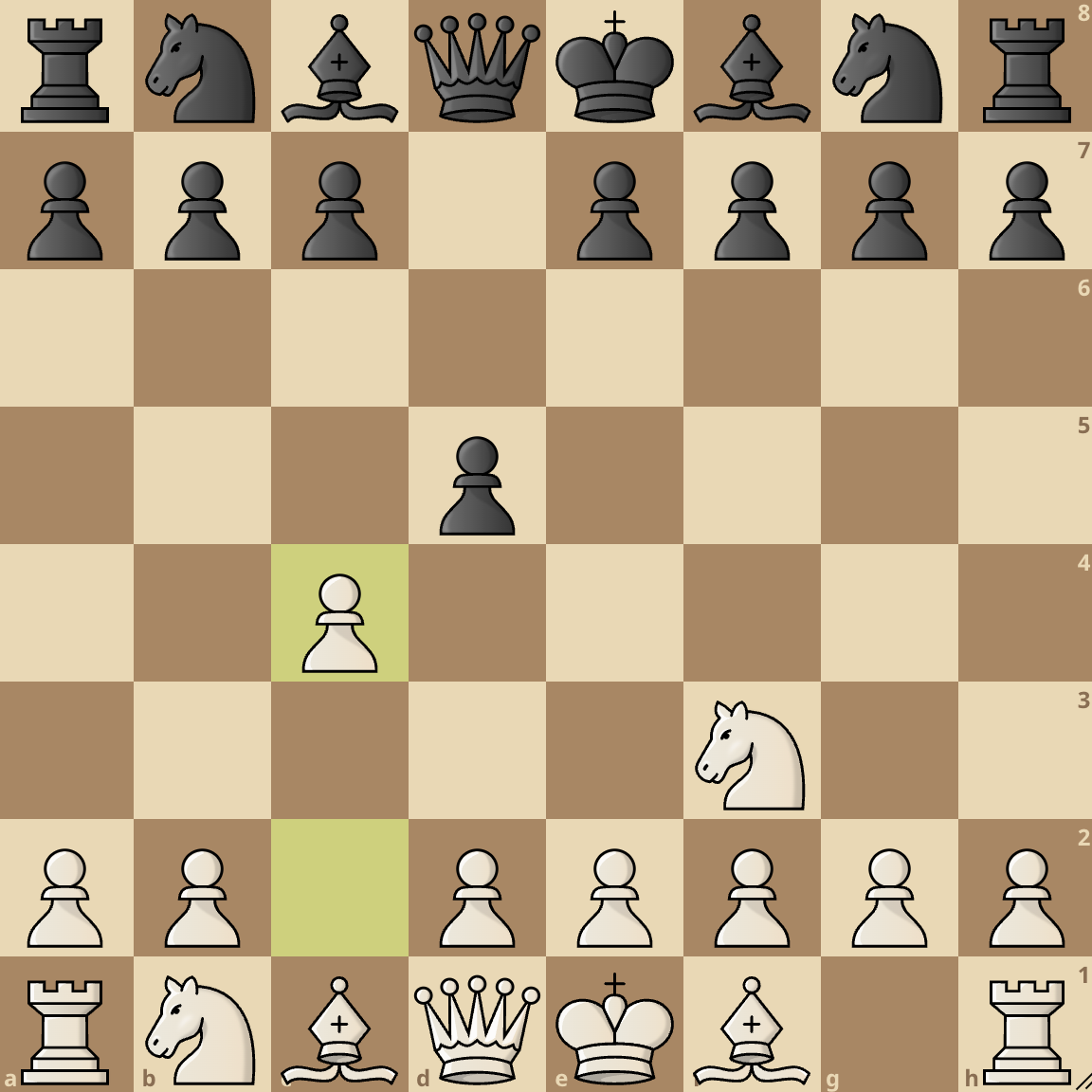
The Reti Opening is a hypermodern chess opening that begins with moves 1. Nf3 d5 2. c4.
It is named after Richard Reti, an Austrian-Hungarian chess player and theoretician who popularized the opening in the early 20th century.
The Reti Opening is considered a flexible opening, as White does not commit to a specific pawn structure or development plan in the opening moves. Instead, White seeks to control the center of the board with pieces rather than pawns.
After 2. c4, White may follow up with moves such as g3, Bg2, and d3, aiming to develop the light-squared bishop to g2 and castle kingside.
One of the advantages of the Reti Opening is that it can often take Black out of their comfort zone and force them to think for themselves early in the game, as they cannot rely on typical pawn structures and piece development plans that they might be familiar with in other openings.
Another advantage is that the Reti Opening can lead to various positions, making it difficult for Black to prepare for every possible variation. This makes it a good choice for players who want to keep their opponents guessing and maintain flexibility in their game plan.
Overall, the Reti Opening is a solid choice for players who want to play a flexible and unpredictable opening that can lead to a wide range of positions on the board.
Learn more in our detailed Reti Opening guide.
14. Bird’s Opening
1. f4
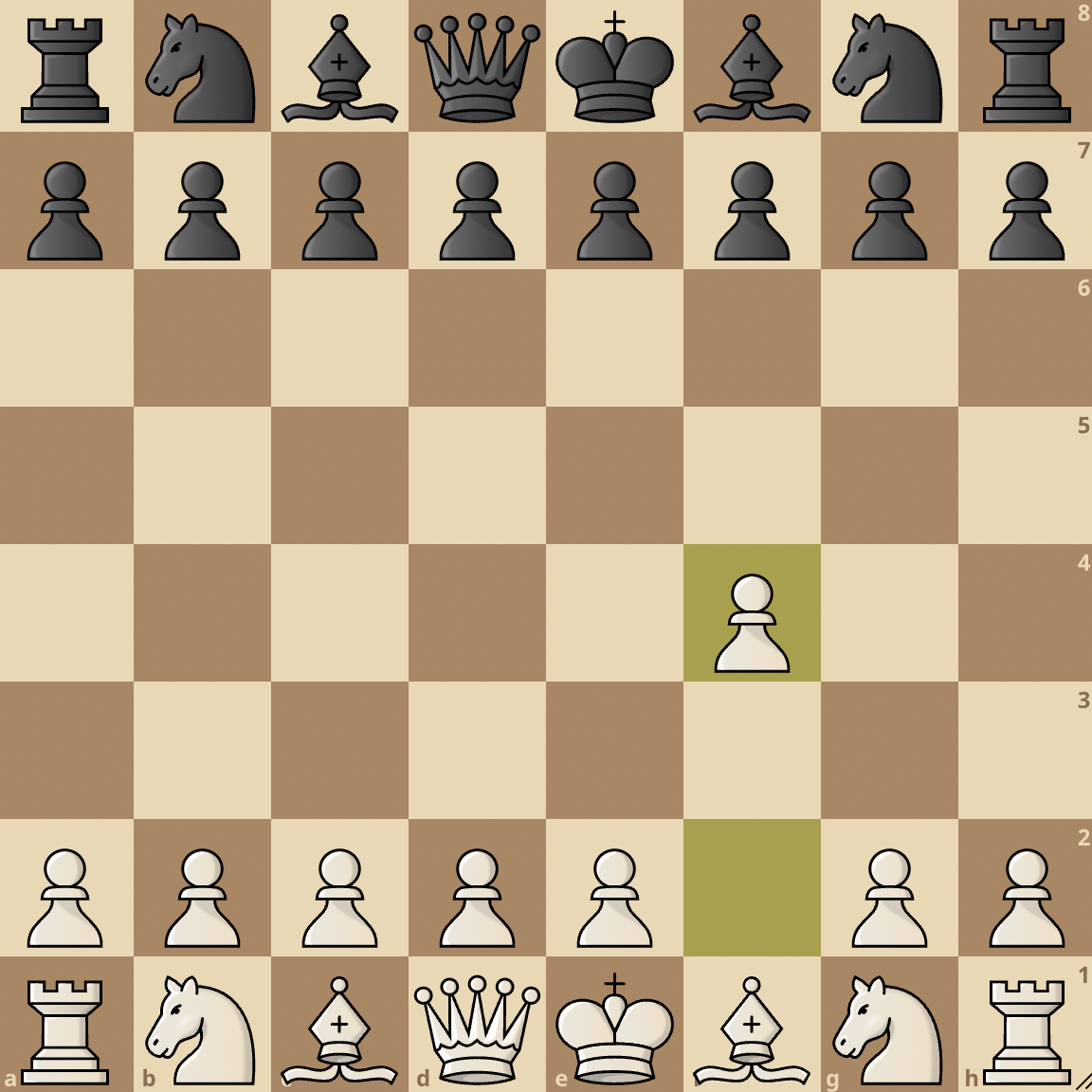
The Bird’s Opening is a chess opening named after the English chess player Henry Edward Bird, known for his unorthodox and creative play.
The Bird’s Opening is considered an irregular or flank opening because it does not follow the common pawn structures that arise from 1. e4 or 1. d4.
The main idea behind the Bird’s Opening is to control the center of the board with the pawn on f4 and then support White’s control of the e5 square with the f3 knight (Ng1-f3).
Overall, the Bird’s Opening is not one of the most popular or widely played openings for White, but it can be a fun and creative choice for players who want to try something different.
Learn more in our detailed Bird’s Opening guide.
13. Larsen Opening
1. b3
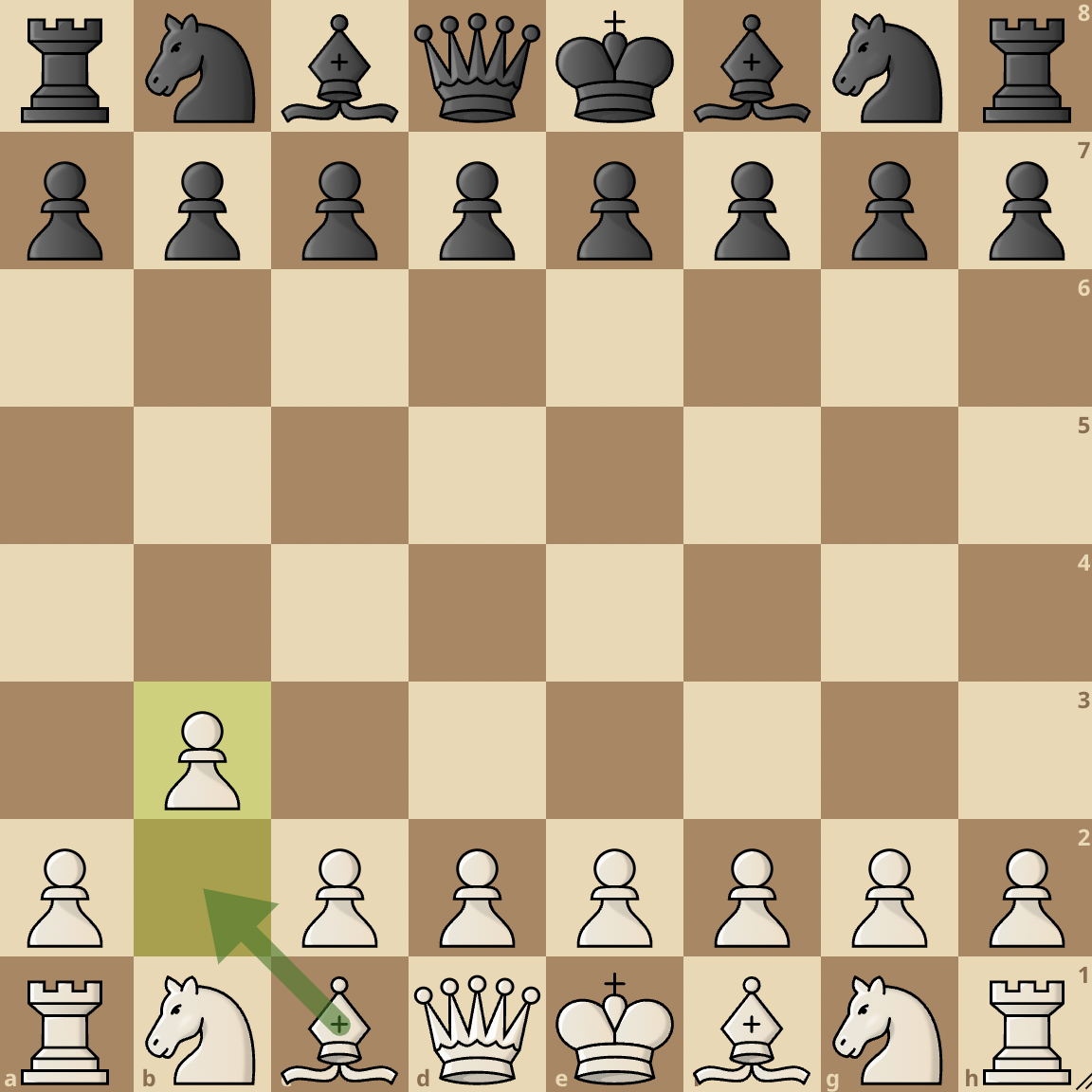
The Larsen Opening is a chess opening named after the Danish chess player Bent Larsen, who was known for his unconventional and aggressive style of play.
The Larsen Opening is considered an irregular opening because it does not follow the common pawn structures that arise from 1. e4 or 1. d4. The main idea behind the opening is to control the b2-h8 diagonal with the dark-squared bishop on b2.
After 1. b3, Black has several options for responding, but one of the most common is to play 1…e5, which can lead to (reverse) positions similar to the King’s Indian Defense or the Pirc Defense. Other possible responses for Black include 1…d5, 1…Nf6, and 1…c5.
This opening can be challenging for beginners, as it requires a good understanding of pawn structures and pieces development.
Learn more in our detailed Larsen Opening guide.
12. Benko Opening
1. g3
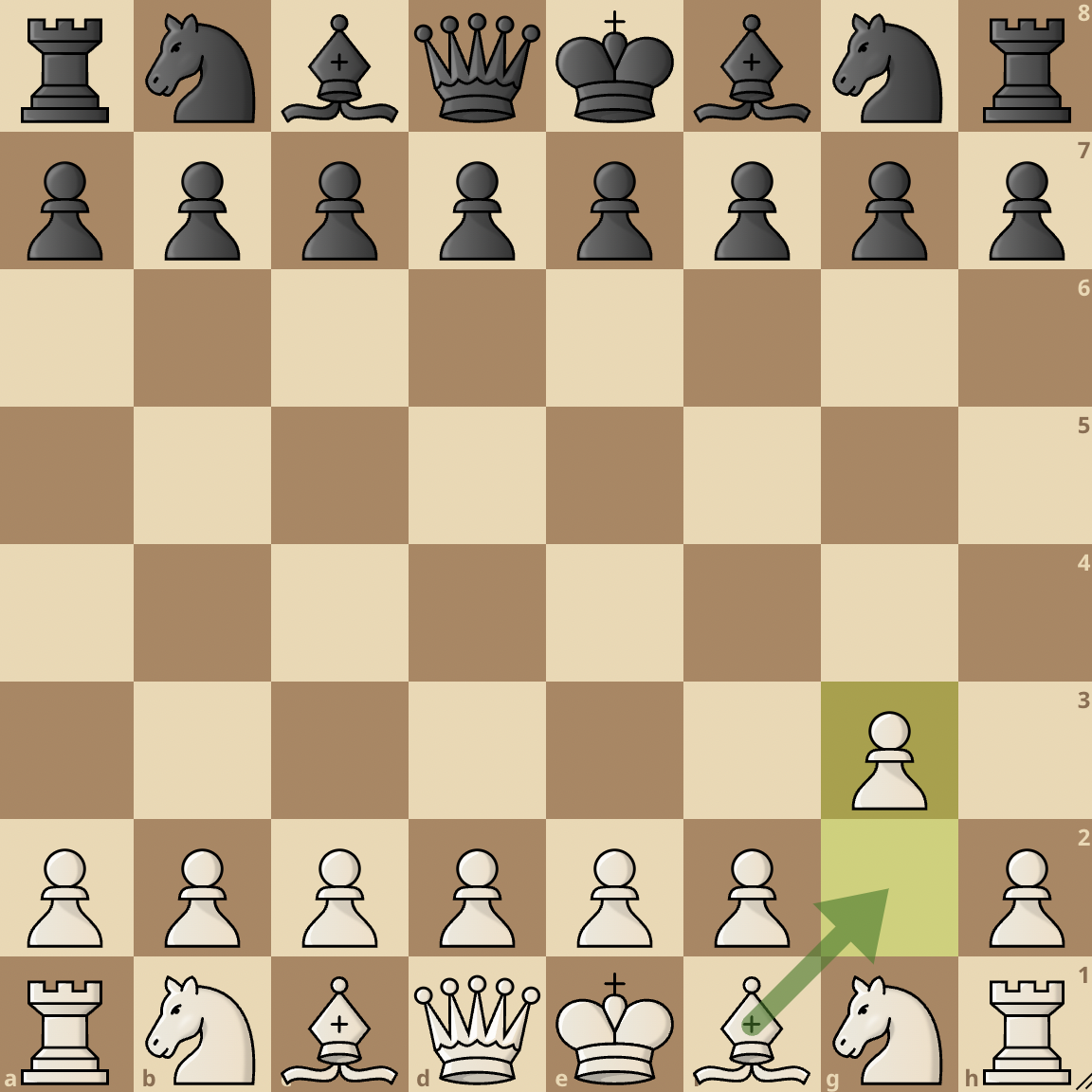
This opening was named after the Hungarian chess legend Pal Benko. It is also referred to as the Hungarian Opening.
The Benko opening is characterized by the move 1. g3 from White. The opening move in the Benko opening ranks as the fifth most popular opening move in chess, after the more popular 1. e4, 1. d4, 1. c4, and 1. Nf3.
The aim of White in this opening is to develop the light-squared bishop to the g2 square quickly, so it assumes control of the g2-a8 diagonal. Black has a list of reasonable replies, including (1…c5) (1…e5) (1…d5) (1…Nf6) and (1…g6).
The Benko opening is employed across all tiers of chess, and it’s an excellent way of surprising your opponent by derailing from the popular opening moves.
Learn more in our detailed Benko Opening guide.
11. Grob Opening
1. g4
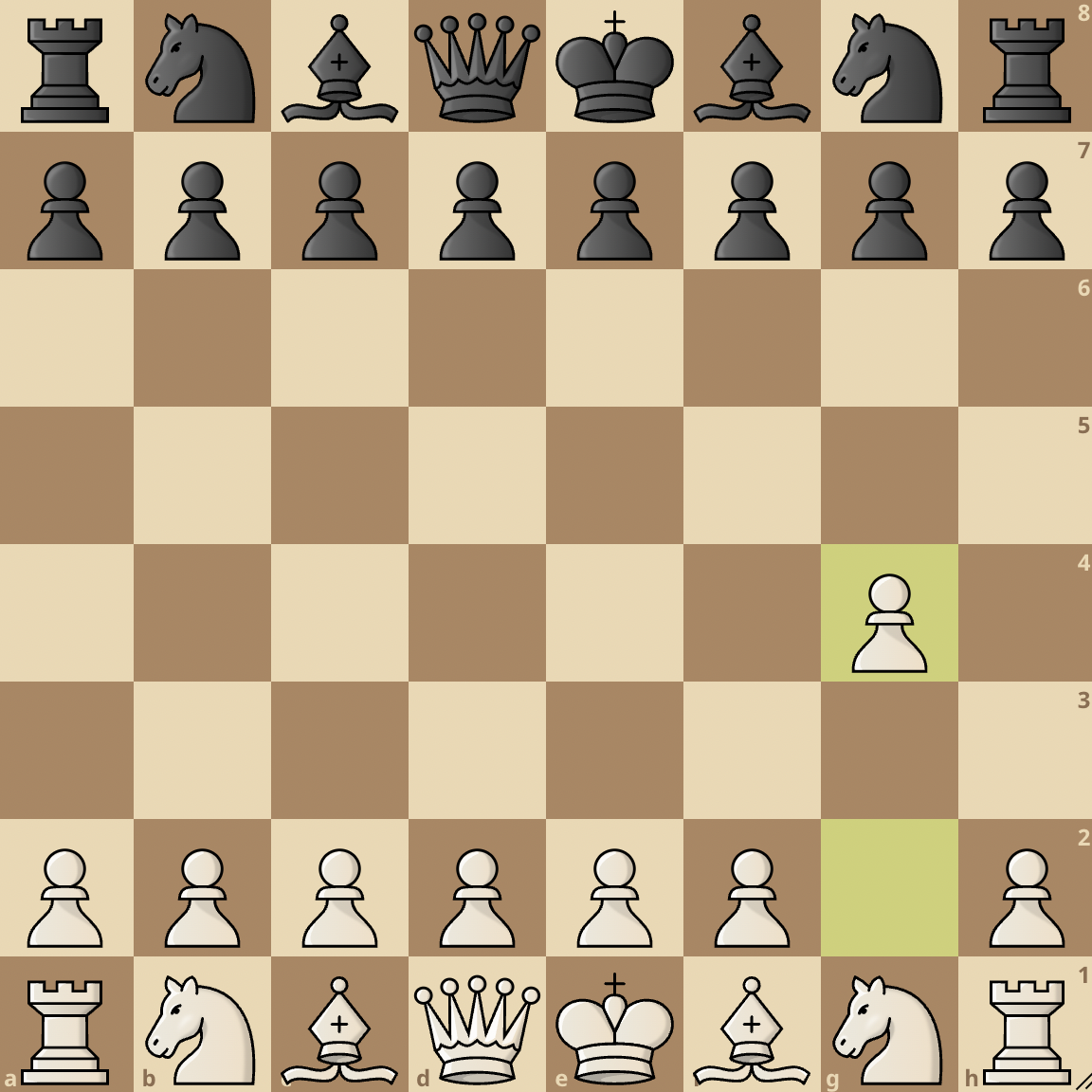
High-level players don’t usually favor the Grob Opening due to its somewhat dubious nature. However, it is still played regularly among club-level players.
The Grob Opening is a flank opening that starts with the move 1. g4 by white. By playing 1. g4, White immediately controls the f5 square with their pawn while freeing the g2 square for the White bishop to occupy.
When the White light-squared bishop assumes the g2 square, it is said to be a fianchettoed bishop.
One reason why the Grob Opening is regarded as a dubious opening is that it immediately leaves the kingside vulnerable and the g4 pawn open to attack.
However, it can also be a way to catch your opponent off guard, as it is a very unconventional opening and is not very well-studied by most chess players.
10. Vienna Game
1. e4 e5 2. Nc3
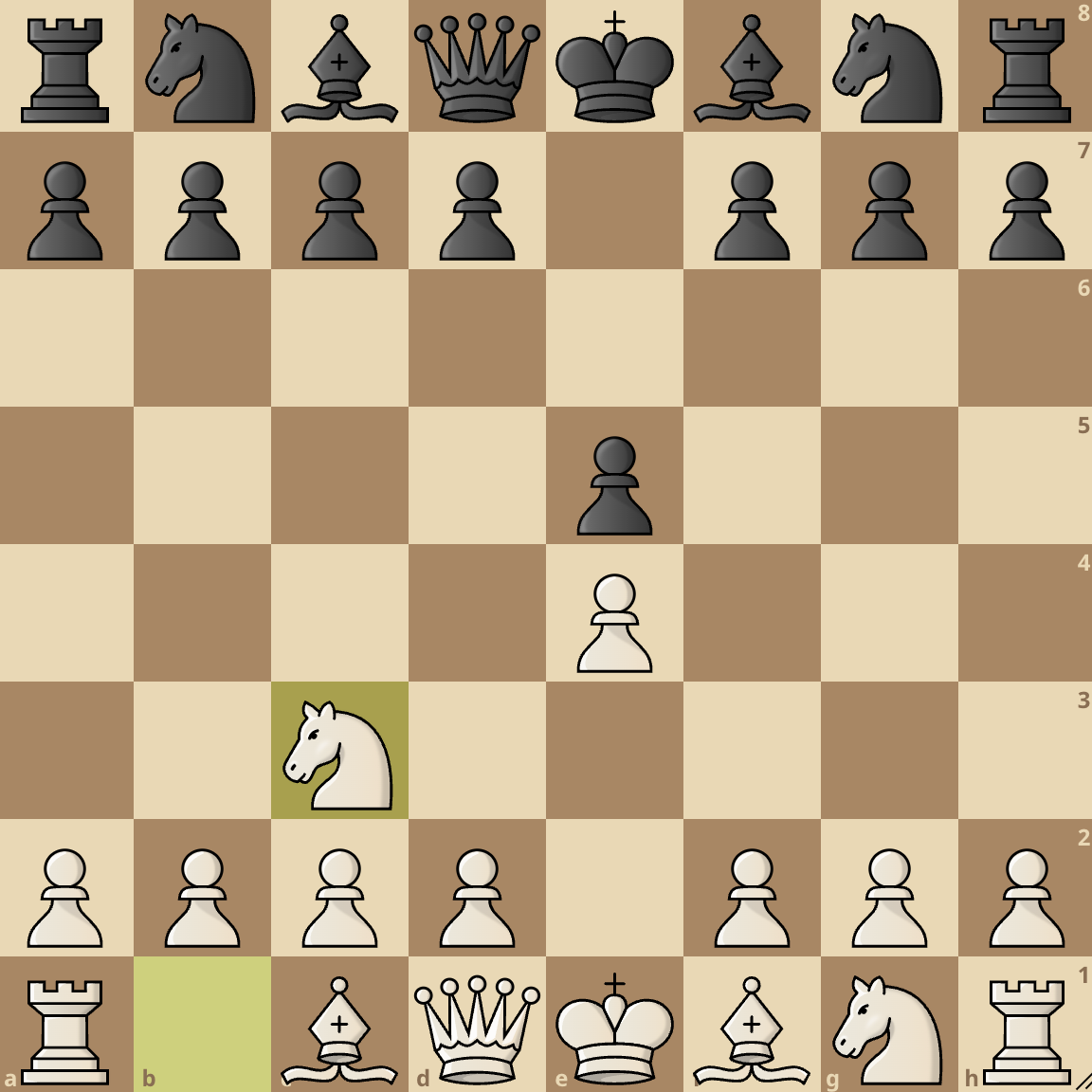
The Vienna Game is a 1. e4 opening by White that features a surprise on move 2. Unlike other regular 1. e4 openings, in the Vienna game, White develops the c3 knight first rather than playing Nf3.
The Vienna is much less common than other 1. e4 openings, but it is very sound in theory. Because of this, it can be an excellent weapon for beginners to catch their opponents by surprise.
This opening has also been played at the highest level by grandmasters like Viswanathan Anand.
Learn more in our detailed Vienna Game guide.
9. Mieses Opening
1. d3
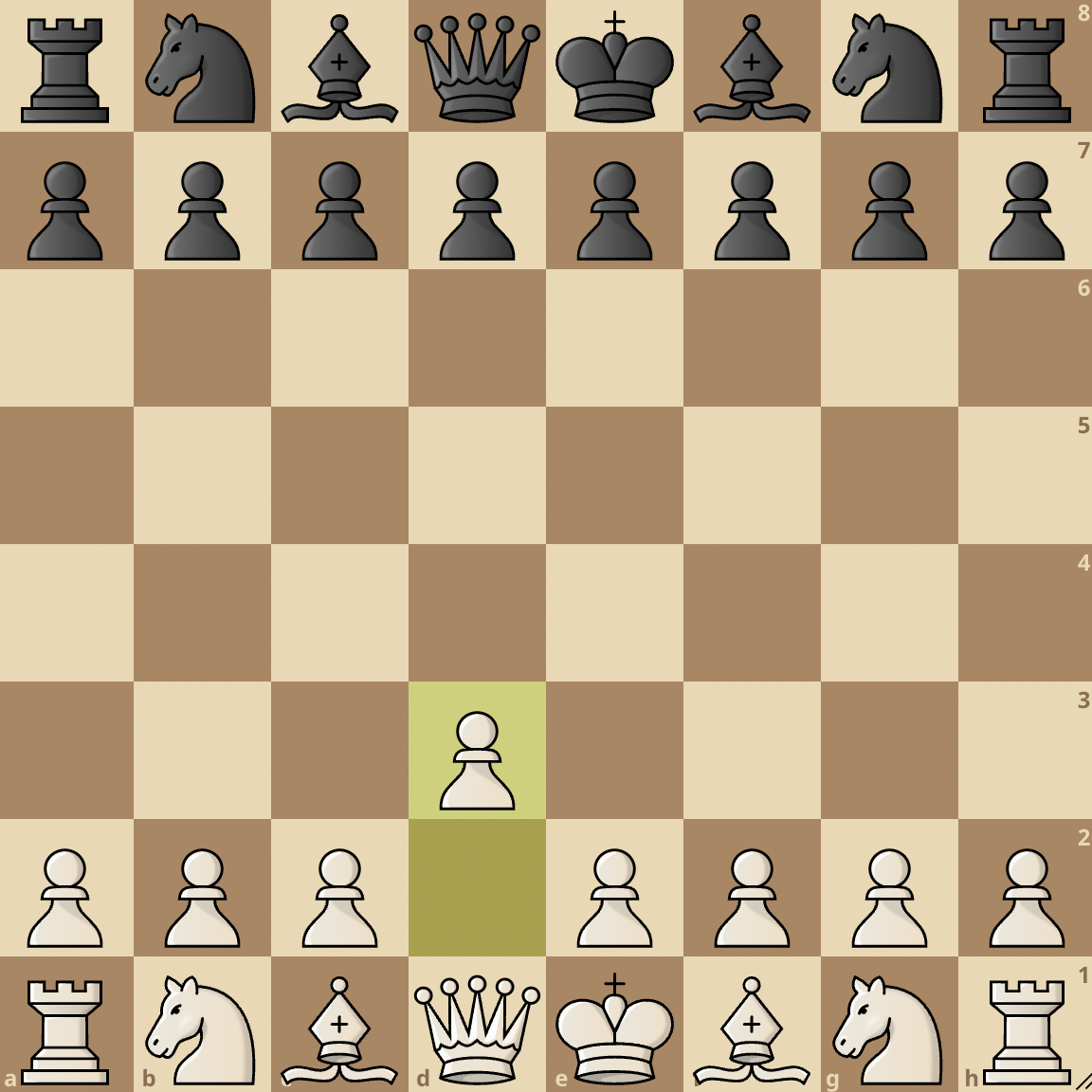
The Mieses Opening is another opening you need to add to your arsenal. The opening is named after the German-British grandmaster Jacques Mieses.
It’s an unconventional opening that is not very popular. This means that it can be used to surprise your opponent effectively.
The Mieses opening is characterized by the move 1. d3 by White. Although White doesn’t stake a strong claim for the center with this move, it allows for the freeing of the c1 bishop.
The Mieses Opening is flexible as it can easily transpose into the King’s Indian Attack opening.
The Mieses has enjoyed use on the highest level. The most famous use of this opening was in the third game in the “Chess Engine v Human Match” that featured Deep Blue against former world champion Garry Kasparov in 1997.
Kasparov believed that the computer would play the opening poorly if it had to rely on its skills rather than on its opening book. This also adds to the fact that the opening is a good choice for surprising your opponent.
The game between Deep Blue and Kasparov ended in a draw. You can play through the game below.
Touch the moves or move the board around for a better interactive experience.
8. Catalan Opening
1. d4 Nf6 2. c4 e6 3. g3
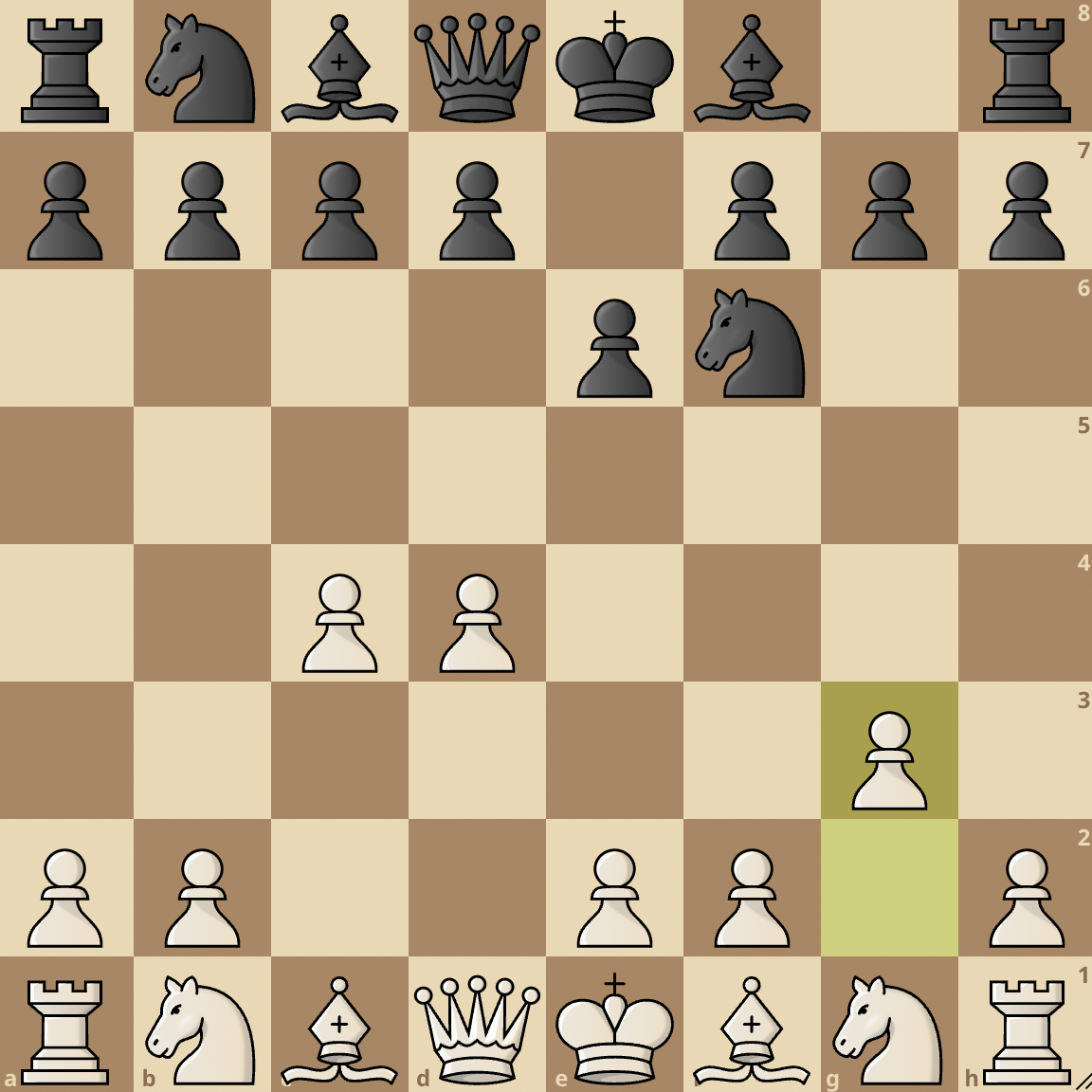
The Catalan Opening is an opening by White that features 1. d4.
In this opening, White aims to combine the powers of the fianchetto bishop on the kingside to gain massive center control.
In the Catalan, rather than going for an all-out kingside attack, White will focus on positional play in the center and Black’s queenside.
Learn more in our detailed Catalan Opening guide.
7. London System
1. d4 d5 2. Nf3 Nf6 3. Bf4
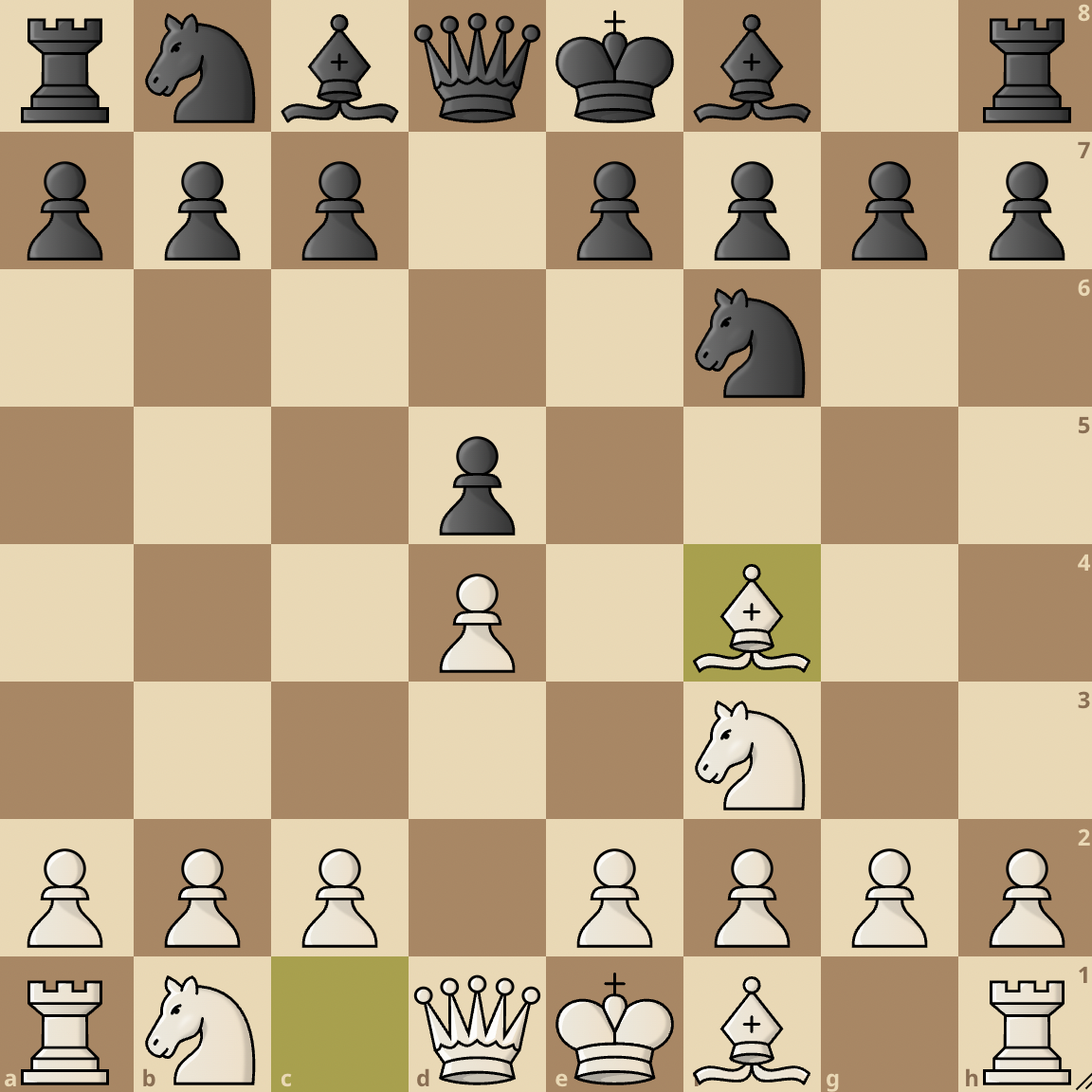
If you are looking for a one-size-fits-all opening, you should try the London System.
The London System is a 1. d4 opening that has the reputation of being very solid. This opening is known as a “system” because White can play this same set-up for almost all Black responses.
The opening features a solid structure with the dark-squared bishop and the g1 knight developed very early. Current world number one Magnus Carlsen has used the London System to great effect.
Learn more in our detailed London System guide.
6. King’s Indian Attack
1. Nf3 d5 2. g3 Nf6 3. Bg2 c5 4. d3 Nc6 5. Nbd2 e6 6. 0-0

The King’s Indian Attack is another solid chess opening you should look to add to your repertoire.
In this opening, White builds a solid defense for their king while contesting for center control.
The King’s Indian Attack is a flexible opening for White that can be used against a variety of Black openings, including the Sicilian Defense, the French Defense, and the Caro-Kann Defense.
This opening can lead to a variety of positions and strategies, depending on how both sides play.
White can play aggressively and aim for a quick attack on the kingside or play more positionally and look to increase their advantage slowly over time.
Learn more in our detailed King’s Indian Attack guide.
5. Italian Game
1. e4 e5 2. Nf3 Nc6 3. Bc4.
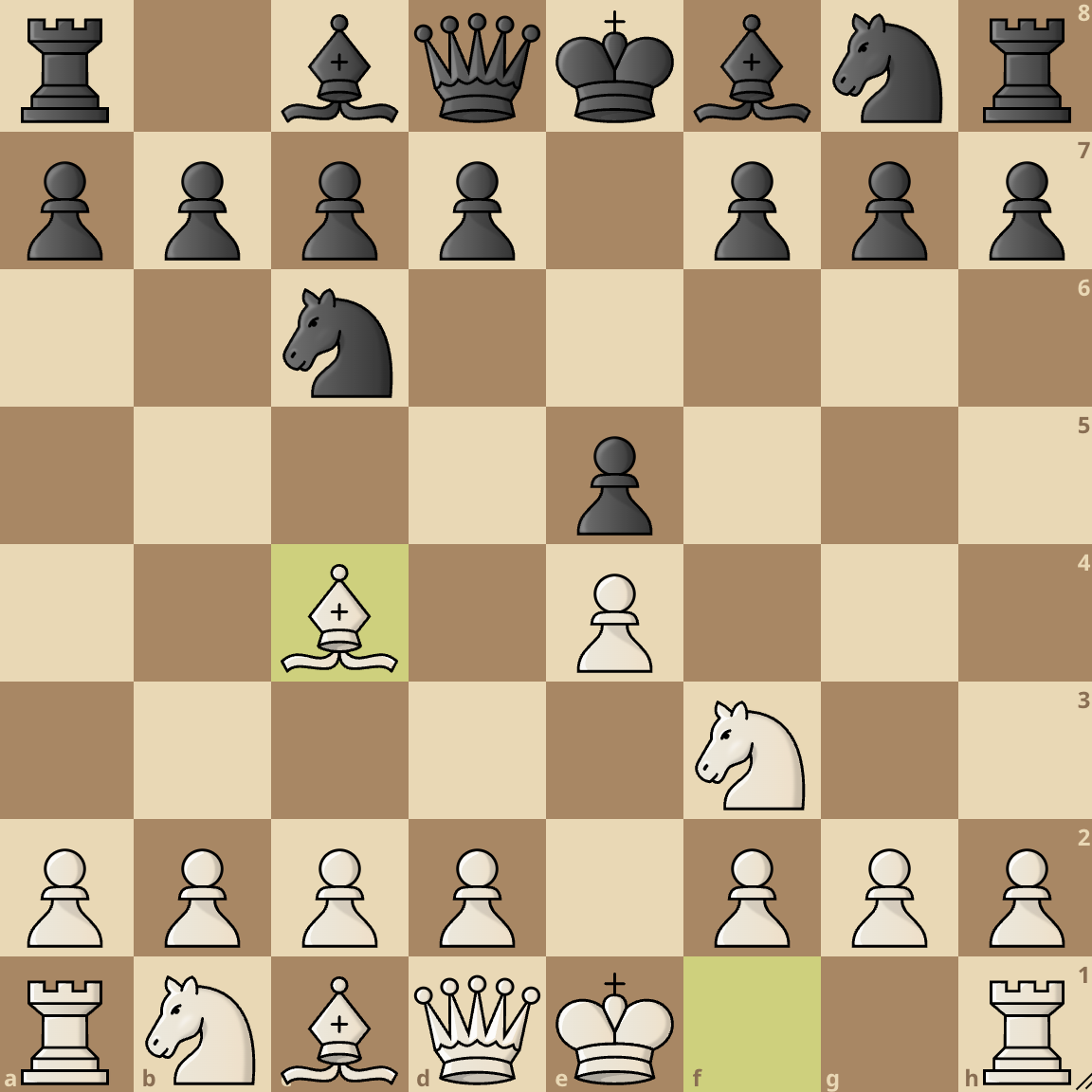
The Italian Game is a classic opening that has been played for centuries and is still popular at all levels of play. It’s not so different from the Giuoco Piano, which means “quiet game” in Italian.
The opening aims to control the center of the board with White’s pawns and develop White’s pieces quickly, with an eye toward launching an attack on the kingside.
After the bishop move, Black has several options for their second move, including 3…Be7, 3…Nf6, 3…d6, and 3…Bc5. Each of these moves has merits/demerits and depends on how the Black player decides to carry on the game.
The Italian Game can lead to a variety of positions and strategies, depending on how both sides play.
White can play aggressively and aim for a quick attack on the kingside or play more positionally and look to increase their advantage slowly over time.
Learn more in our detailed Italian Game guide.
4. English Opening
1. c4
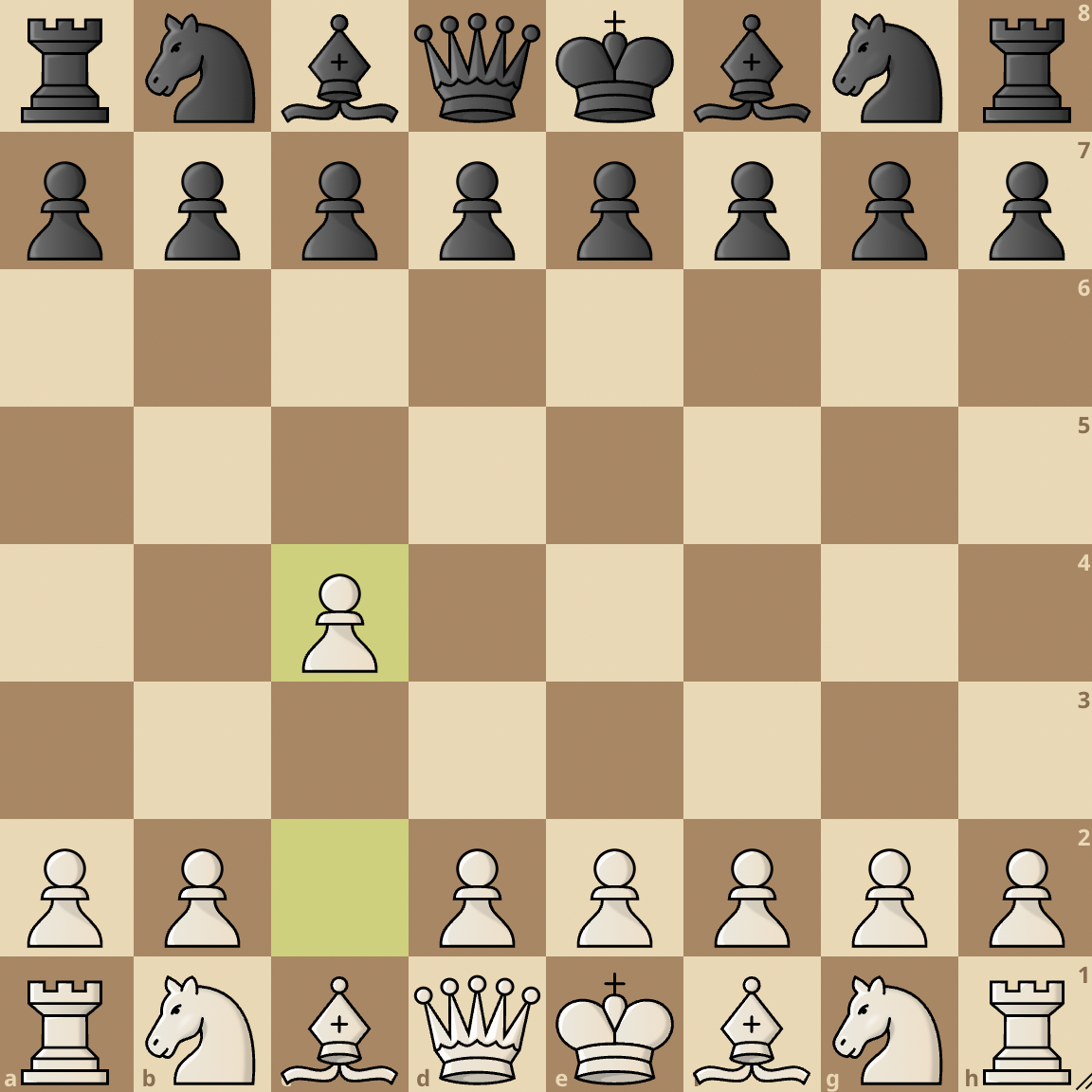
If you’re not a fan of playing 1. e4 or 1. d4 as White, then the English Opening should suit you perfectly.
This opening is a flank opening, meaning that you will be attacking the center using pieces from outside the central squares (e4, d4, e5, d5).
The English Opening is characterized by the move 1. c4. By playing this, White lays claim to the central d5 square.
Black can respond in various ways (1…c5), known as the symmetrical variation, (1…Nf6) the Anglo-Saxon variation, (1…e6) the Agincourt Defense, and various other ways.
The English Opening can transpose into a hypermodern opening where the player focuses on controlling squares with their minor pieces rather than pawns.
Learn more in our detailed English Opening guide.
3. King’s Gambit
1. e4 e5 2. f4
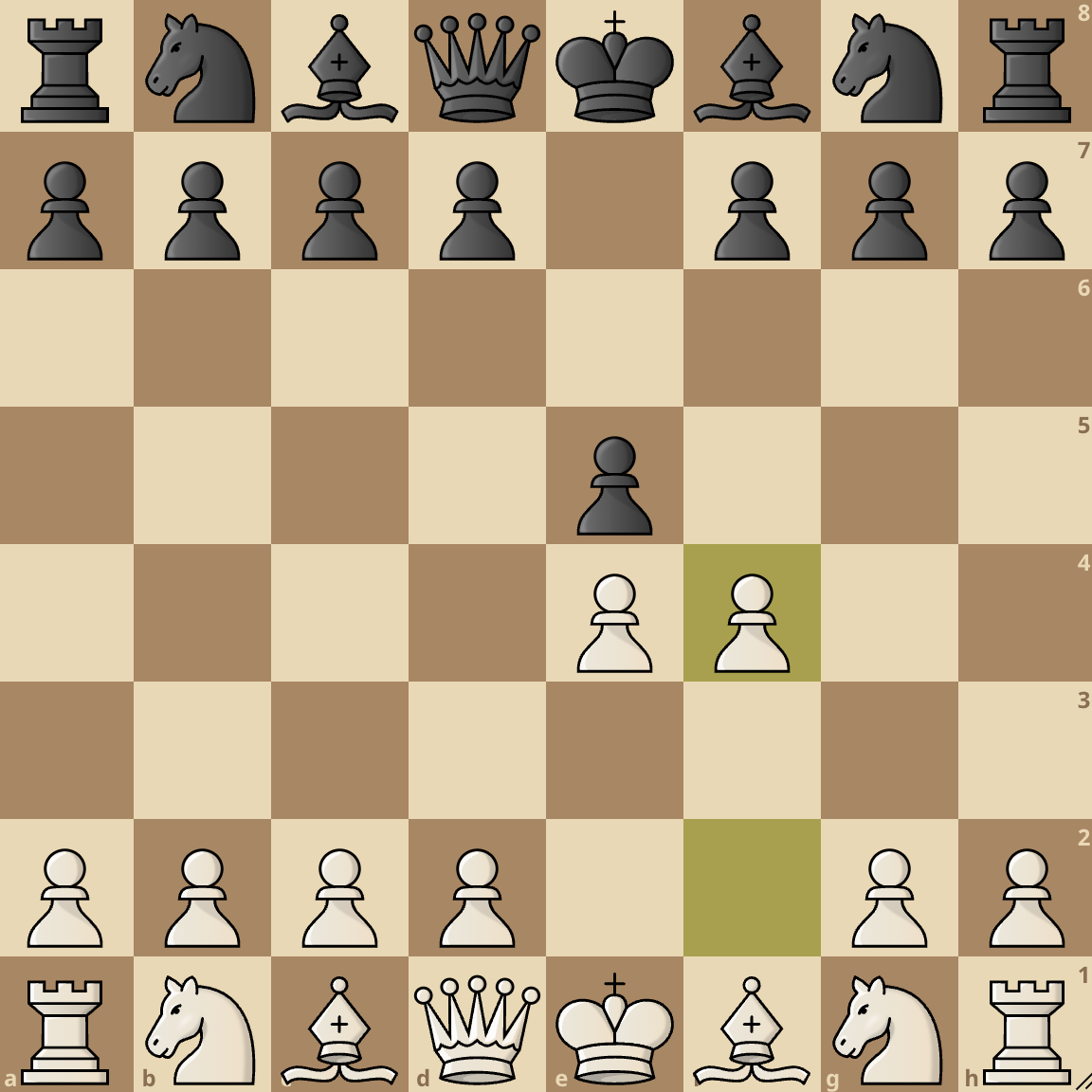
The King’s Gambit opening is an aggressive approach by White offering an early pawn sacrifice to develop pieces and control space quickly.
By playing 2. f4, White is offering the flank pawn to Black so as to start developing pieces quickly.
One of the main objectives of the King’s Gambit is to gain quick and early control of the central squares while simultaneously freeing squares for the other pieces to join the game and start an attack on the Black king.
The King’s Gambit has a variety of variations, with all of them having their respective merits and weaknesses.
Learn more in our detailed King’s Gambit Opening guide.
2. Ruy Lopez
1. e4 e5 2. Nf3 Nc6 3. Bb5

The Ruy Lopez is one of the oldest and most popular openings in chess. It is played across all levels, from beginner levels to the highest level of chess.
This opening starts with 1. e4 by White, and Black responds with 1…e5. White then develops the knight with 2. Nf3, attacking Black’s e5 pawn. Black will defend with 2…Nc6.
White then plays 3. Bb5, putting pressure on the Black knight on c6. This move signifies the Ruy Lopez or Spanish opening.
Black can choose to respond to White’s 3. Bb5 in a couple of ways.
They include (3…a6) the Morphy Defense, (3…Nf6) the Berlin Defense, and (3…d6) the Steinitz Defense. These are some of the variations Black can choose to go for.
The Ruy Lopez is a well-analyzed opening for both the White and Black sides and is played regularly by top grandmasters like Fabiano Caruana.
Learn more in our detailed Ruy Lopez Opening guide.
1. Queen’s Gambit
1. d4 d5 2. c4
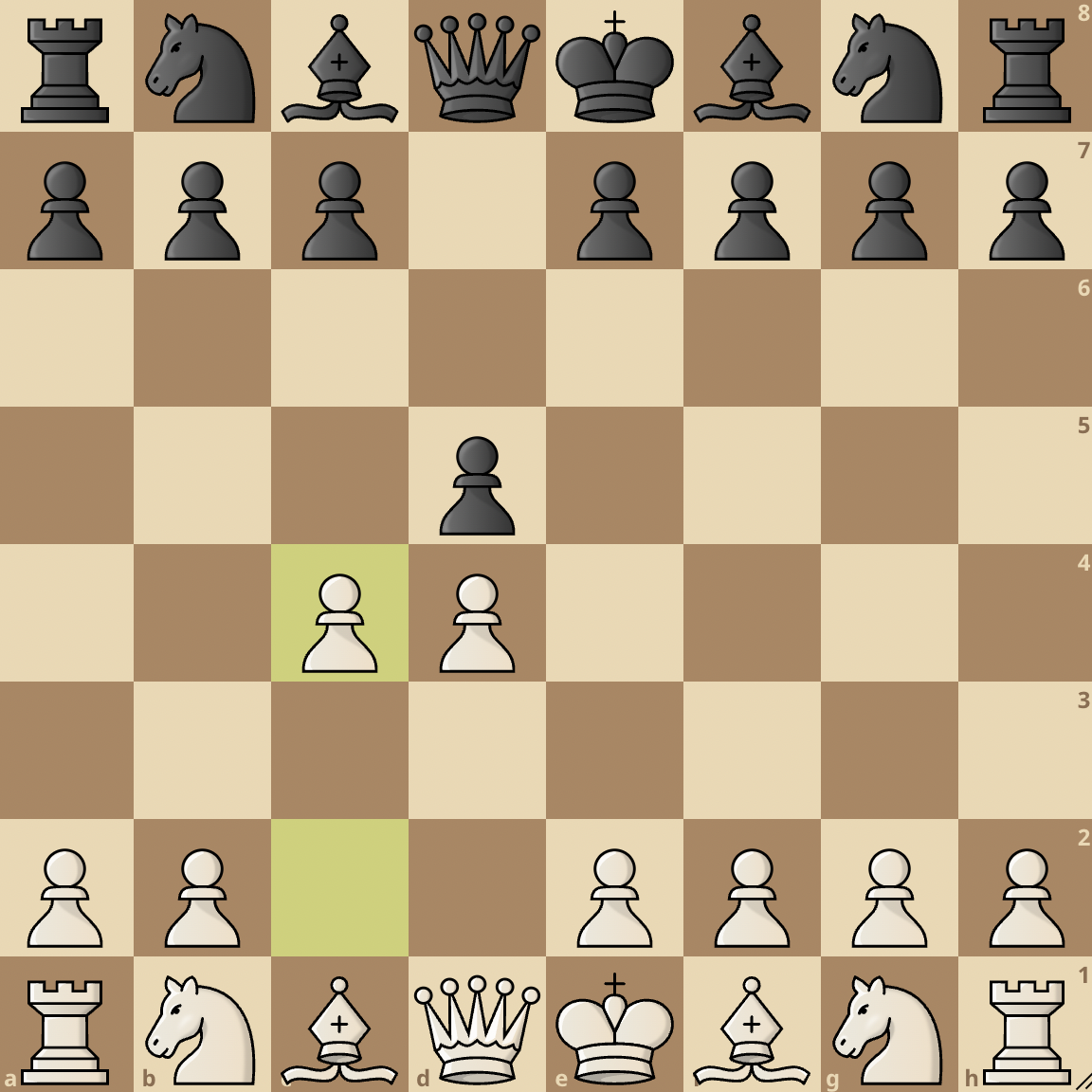
The name of this opening rings a bell. That is because the popular Netflix series ‘Queen’s Gambit’ got its name from this opening.
The Queen’s Gambit opening is one of the best chess openings for White, popular amongst all levels. It begins with the move 1. d4 by White. Black replies 1…d5.
White then plays 2. c4, offering Black a chance to capture the c4 pawn. This move is where the opening gets its gambit qualities from.
Here, White offers Black the chance to capture the c4 pawn in exchange for center control and rapid development.
Black has a host of options here. They can either accept the gambit or reject it by playing other moves rather than 2…d×c4.
Learn more in our detailed Queen’s Gambit Opening guide.
Frequently Asked Questions (FAQs)
What is the best opening for White in chess?
There is no single “best” opening for White in chess. The choice of opening will depend on your playing style and the specific strategies you want to employ.
What is the difference between an open and a closed opening in chess?
An open opening is one where the center of the board is opened up early in the game, while a closed opening is one where the center remains closed for some time.
How do I choose an opening as White in chess?
To choose an opening as white, you should consider your personal playing style, the strategies you want to employ, and the openings your opponent is likely to play.
What are some common mistakes to avoid in the opening as White in chess?
Common mistakes to avoid in the opening as white include neglecting the development of minor pieces, making premature attacks, and failing to control the center of the board.
What are some common openings for White in chess?
There are several common openings for white, including the Italian Game, the Ruy Lopez, the Queen’s Gambit, and the English Opening.
You may also want to check out our compilation of 10 Of The Best Chess Openings For Black.






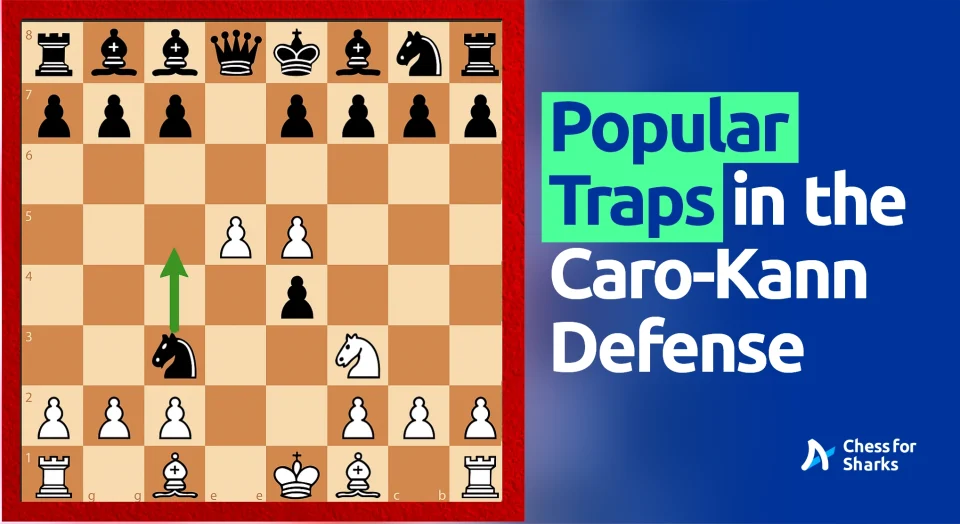
join the conversation